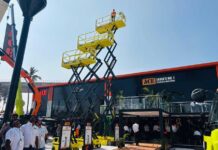
ICRA projects a 3-5% year-on-year growth in wholesale volumes for the Indian commercial vehicle (CV) industry in FY2026, marking a recovery after an estimated flat performance in FY2025. The slowdown in demand during the first half of FY2025, influenced by the General Elections, contributed to the stagnation.
Commenting on the industry outlook, Kinjal Shah, Senior Vice President & Co-Group Head, ICRA, stated: “The resumption of construction and infrastructure activities, steady rural demand, and increased replacement sales driven by ageing fleets and government mandates are expected to fuel volume expansion towards the end of FY2025 and into FY2026.”
ICRA remains optimistic about the long-term growth prospects of the domestic CV industry. Continued infrastructure development, evidenced by higher capital outlays in recent budgets, rising mining activities, and improved road and highway connectivity are expected to support future growth. Additionally, replacement demand is likely to remain strong, particularly in the medium & heavy commercial vehicle (M&HCV) segment, where the average fleet age is estimated at ~10 years, further aiding industry expansion in the medium term.
ICRA expects mixed growth trends across commercial vehicle sub-segments in FY2026:
- M&HCV (Trucks): Wholesale volumes are projected to grow by 0-3% YoY after a flat or marginally negative FY2025, supported by the resumption of construction and infrastructure activities. The segment saw a ~7% YoY decline in 9M FY2025, with tippers contracting ~11% and haulage/tractor-trailers each down 5%.
- LCV (Trucks): Anticipated to grow 3-5% YoY in FY2026 following a flat or slightly negative FY2025. Growth will be driven by infrastructure recovery and an improving economic environment, despite prior challenges like a high base effect, e-commerce slowdown, and competition from electric three-wheelers. The segment declined 3% YoY in 9M FY2025.
- Buses: The segment is set for strong growth, with an 8-10% YoY rise in FY2026 after an expected 11-14% increase in FY2025. The scrappage of older government vehicles is boosting replacement demand, particularly from state road transport undertakings (SRTUs), pushing volumes beyond the FY2013 peak.
Conventional fuels, primarily diesel, continue to dominate India’s commercial vehicle (CV) industry, accounting for ~88% of the powertrain mix in YTD FY2025, while alternative fuels (CNG, LNG, and electric) make up the rest. Electric vehicle (EV) penetration is notably higher in the bus segment at 5%.
The development of dedicated freight corridors (DFCs) is expected to impact container traffic on the Western corridor but leave other road traffic largely unaffected. Increasing freight rates are likely to support industry demand. While delinquencies in both new and used CV portfolios have stabilized after pandemic-related peaks, their movement remains a key factor to watch.
Shah further added: “ICRA expects the operating profit margin (OPM) of the domestic CV original equipment manufacturers (OEMs) to remain range-bound at 11-12% in FY2025 and FY2026 compared to 10.7% in FY2024, with factors such as favourable raw material expenses, price hikes undertaken by CV OEMs and other cost rationalisations expected to lend some support to the profitability.”
Mandatory installation of air-conditioned cabins for trucks from October 2025 onwards (which is likely to increase the vehicle prices by Rs. 20-30,000) is one of the key upcoming regulatory interventions in the domestic CV industry. The capital expenditure (capex) and investments for the industry are likely to increase to ~Rs. 58-60 billion in FY2025 and FY2026, against ~Rs. 34 billion in FY2024. These will be mainly towards product development, especially in the areas of alternate powertrains, technology upgradation and maintenance-related activities.
ICRA expects the credit metrics of the industry to demonstrate a gradual improvement in FY2026, aided by steady profitability and contained debt levels. With this, ICRA estimates the Total Debt/ OPBITDA and interest coverage for the industry to gradually improve to 1.0 – 1.2 times and 8.0 – 8.5 times, respectively, in FY2026. Overall, the coverage metrics for FY2026 are projected to remain comfortable, and better than the FY2020-FY2023 period.









